Showing 651–660 of 1165 results
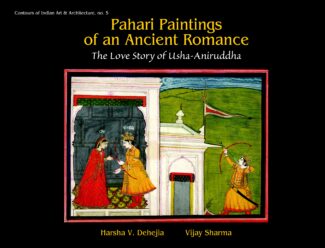
The book exhibits paintings which depict an ancient love story of India involving Krishnas grandson Aniruddha and Banasuras daughter Usha. Depiction of Garudas narration of the story to Krishna, Balarama and Pradyumna during their battle with Banasura, and the Pahari kalam of painter Ranjha create lyrical romantic scenes and gory battles with equal ease.
Among ancient love stories of India, that of Usha-Aniruddha has a pride of place. Being a part of various Puranas such as the Harivamsha, Bhagavata and Vishnu Puranas it acquires a sacrality and legitimacy. We are privy to the interaction of all the three gods, namely Vishnu, Shiva and Brahma. The highlight of the story is the romantic involvement of Krishsas grandson Aniruddha and Banasuras daughter Usha. Between scenes of a pitched battle between Banasura and Krishna, where a mighty demon and his army battle with Krishna, Balarama and Pradyumna and interspersed with long conversations with Garuda, the narrative takes us to tender scenes of romance as well as a birds-eye view of Shonitpur and Dvaraka. The Puranic narrative is brought alive by the graceful Pahari kalam of Ranjha, son of Nainsukh, who renders the story with finesse and precision and creates lyrical romantic scenes and gory battles with equal ease. The book brings together for the first time the entire series from the Bhuri Singh Museum of Chamba in Himachal Pradesh but also features folios from other museums and private collections as well as a critical look at the painter and the patron of this series. The book is a visual treat.
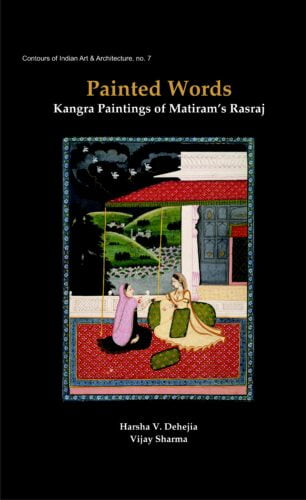
Matiram’s sonorous poetry embellished by Purkhu’s sensuous imagery, transport us into the rarefied realm of the Rasraj, where romance interwoven with poignancy, bring alive the emotion-laden shringara rasa. Both lyrics and imagery have been seemlessly sculpted into visual poetry.
No celebration of ritikavya can be complete until we have enjoyed the sonorous poetry of Matiram and the sensuous images of Purkhu.
With well sculpted words and lyrical rhythms Matiram takes us into the rarefied world of the nayak and the nayika, their amorous exchanges, the sensuality of loving glances, the charged moments of romantic feelings, the heart throb of belonging, the poignancy of longing and above all the fulfilment of desire.
Line by line and doha after doha, Matiram leads us into the emotionally charged world of shringararasa and for those of us who are chastened by harishringara we go from one level to another till we hear the flute of Krishna.
And when we find that these sonorous words of Matiram have been brought alive by none other than Purkhu and his school of painting under the patronage of Sansar Chand of Kangra our joy is doubled and Matiram’s words become visual poetry.
In the hands of Purkhu words become lines, emotions take on a colour and desire becomes palpable through the magic of his kalam.
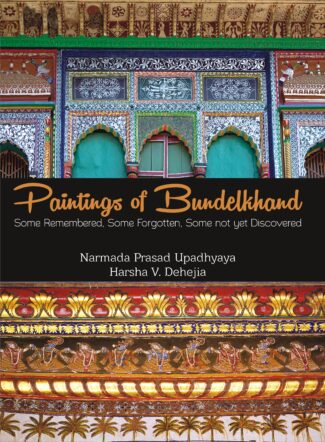
This volume presents meticulous deliberations on the mural paintings of Bundelkhand. These murals — a living art, more democratic and decidely popular — were the artistic idiom of Bundelkhand. It reminds us a truth that the paintings of Bundelkhand are half remembered, half forgotten and many yet to be discoverd.
This volume, a visual journey, through its meticulous deliberations on the wall paintings and miniature paintings of Bundelkhand makes us reminisce the footfalls of valiant Bundella kings, ankle bells of elegant court-dancers, evocative poetry of mahakavi Kesvadas and the brilliant artistic skills of mural painters and many other historical events. These find their excellent expressions beyond the palaces of Orchha and Datia, and in many jagirs and thikanas such as Rehali, Madanpur, Chhatarpur, Narsinghgarh, Ajayagarh, Todi Fatehpur, Samthar, Jhansi and Rannod as well. A glimpse of Malwa painting is a value-add.
The murals, a living art, more democratic and decidedly popular, were the artistic idiom of Bundelkhand. It was art for the raja and the praja, depicting not only Puranic stories, but also the regal affairs and the day-to-day life of ordinary people.
Despite the fact that time, the vicissitudes of weather and vandalism have taken their toll on the murals, a cultivated aesthete can restore life in them. The book candidly reminds us a truth: The paintings of Bundelkhand are half remembered, half forgotten and many yet to be discovered.
Thus, this book should inspire art connoisseurs, art historians, art students, and laymen alike, paving the way for further researches and studies on the forgotten legacies of Bundelkhand.
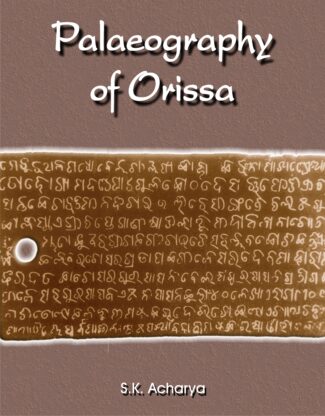
It studies the palaeography of Orissa, especially the evolution of the regional Oriya script, by analyzing several copper-plates and stone inscriptions. An attempt to resolve the prolonged debate on the parentage of modern Oriya script, considering the importance of geo-political forces and the cultural growth of a region.
The book studies the palaeography of Orissa from the third to the seventeenth century ad. It focuses on the evolution of the regional script of Orissa from the Bràhmã script to the advent of the modern Oriya script through various intermediate stages. Analyzing several hundreds of copper plate and stone inscriptions and with reproductions from facsimiles of many original inscriptions, the author delves into the palaeographical peculiarities of the scripts prevalent in different sub-regional/regional kingdoms of ancient and medieval Orissa. He followed the dominant stylistic nomenclatures for studying the scripts and emphasized on the importance of the geo-political forces in determining the writing style of a sub-region/region. The view that the process of `palaeographical segmentation ran parallel with linguistic segmentation’ has been successfully tested in Orissan context. The advent of the proto-regional and regional script of Orissa has been studied in the backdrop of this process. Besides, an attempt has been made to resolve the prolonged debate on the parentage of the modern Oriya script. It has been argued that political changes and ideologies of the ruling class were some of the determining factors in the growth and development of Oriya language and script. The work will be useful to scholars and students of history, culture, language and literature for understanding the growth and development of languages and scripts in interaction with the political milieu and cultural growth of a region.
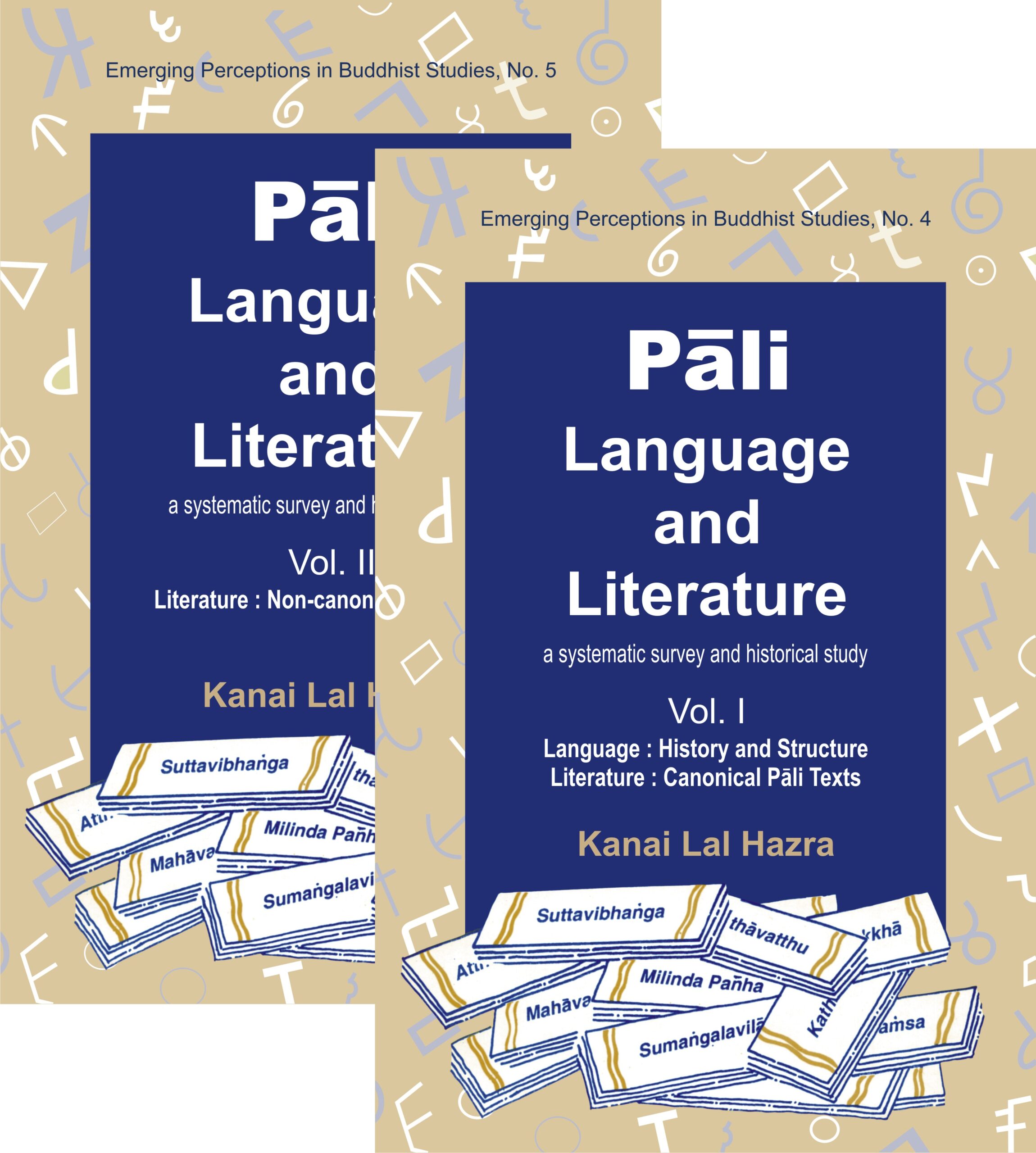
Beginning with a description of the language, its historical evolution, phonology and grammatical categories, the book studies the canonical Pali texts (the three Pitakas) and surveys the non-canonical Pali literature covering manuals and chronicles.
In Pali is preserved the Buddhist canon. Which, considered as the most authentic form of Buddhavacana, constitutes the very matrix of its 2500-year-long Theravada tradition. A refined, widely-spoken language of the early Middle Indic (Indo-Aryan) stage: about bc 600-200, Pali has also left, for posterity, a splendid legacy of secular literature that captures contemporary socio-cultural milieus not only of India, but of Myanmar, Thailand, Sri Lanka, and other neighbouring countries as well. Here is, in two volumes, a fascinating, well-knit study of the Pali language, and also of its literature: both canonical and non-canonical. Beginning with a systematic description of the language, its historical evolution, phonology and major grammatical categories, VOLUME 1 takes an indepth, critical look at the canonical Pali texts all the three Pitakas : the three baskets (collections): the Vinaya, Sutta and Abhidhamma, which, among other things, embody Sakyamunis own universal message, the writings of his immediate monastic followers/disciples, the basic principles of shula (ethical behaviour), the disciplinary codes for the sangha and, above all, the Theravada philosophy in its truly pristine frame. VOLUME 2 surveys nearly the whole variety of Non-canonical Pali Literature covering creative writings, manuals, and as many as 25 chronicles: from Sri Lanka, Myanmar, and Thailand besides numerous commentaries of the old-world scholars, like Buddhadatta, Buddhaghosa, and Dhammapala. In focus here are also a range of treatises on law, grammar, lexicography, and poetics including rhetorics and metrics. A painstakingly documented work with a comprehensive index, involving years of Dr. Hazras research effort, this book is invaluable to the scholars/researchers of Buddhist Studies, specially of Theravada Buddhism, Pali language and Pali literature.
This volume on Pancastikayasara deals with major concepts of Jaina metaphysics and ethics. It examines with the essential nature of panca (five), astikaya (entities) – jiva (conscious being), non-conscious entity (ajiva), including pudgala (matter), the principle of motion (dharma), the principle of rest (adharma) and space (akasa), which are existent realities (asti). The book describes the nine principles (tattvas), the first two primary categories of jiva (soul) and ajiva (non-living entity) and the seven derivative categories of virtue (punya) and sin (papa), the inflow (asrava), the stoppage (samvara), shedding (nirjara), bondage (bandha) of karmas and liberation (moksa). It assesses the concept of the three jewels (ratnatraya), which together constitute the path of liberation. The book will be an indispensable reference work for scholars and students of Indian philosophy and religion, particularly Jainism.
छठी शताब्दी के लब्ध प्रतिष्ठित ज्योतिषविद् वराहमिहिरकृत पञ्चसिद्धान्तिका भारतीय खगोल शास्त्र का एक प्रमुख सैद्धान्तिक ग्रन्थ है। उस समय के उपलब्ध प्रमुख पाँच ज्योतिष सिद्धान्तों – पौलिश, रोमिक, वासिष्ठ, सौर और पितामह को संकलित कर इस ग्रन्थ को अठारह अध्यायों में प्रस्तुत किया गया हे। यें पाँचों ग्रन्थ और उनकी टीकाएँ आज लुप्त हो चुकी हैं। पञ्चसिद्धान्तिका में वर्णित विषयों में सौर एवम् रोमक सिद्धान्तों पर आधारित अहर्गण की गणना, अधिमास, क्षय तिथियों की गणना, वर्ष, मास आदि के सूत्र प्रस्तुत किए गए हैं। ग्रहों की गति का विश्लेषण तथा पौलिश, रोमक एवम् सौर सिद्धान्त पर आधारित सूर्य एवम् चन्द्र ग्रहण की गणना-विधि भी प्रस्तुत की गई हे।
वराहमिहिर पहले ज्योतिषविद् थे जिन्होंने अयनांश अर्थात् विषुव के स्थानान्तरण का शुद्ध मान दिया। इस पुस्तक में त्रिकोणमिति के ज्या के शुद्ध मान की गणना भी प्रस्तुत की गई है।
पञ्चसिद्धान्तिका का यह हिन्दी रूपान्तरण निश्चित ही सैद्धान्तिक खगोलिकी के शोधकर्ताओं एवम् अन्य पाठकों के लिए उपयोगी होगा।
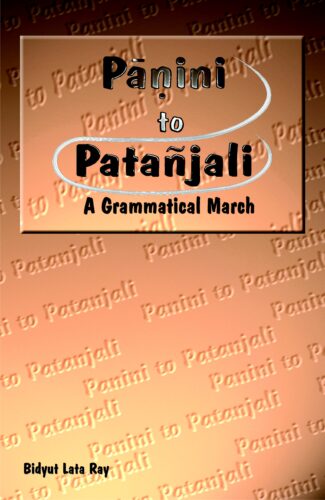
The volume presents scholarly essays studying the origin and evolution of Sanskrit grammar in ancient India, focusing on the monumental works in Sanskrit grammar, the Astadhyayi of Panini, the Varttikas of Katyayana and the Mahabhasya of Patanjali and their impact on the Sanskrit grammatical tradition.
The book presents scholarly essays examining the origin and evolution of Sanskrit grammar in ancient India from the time of Panini to Patanjali. It focuses on the monumental works in Sanskrit grammar, the Ashtadhyayi of Panini, the Varttikas of Katyayana and the Mahabhashya of Patanjali and the impact of these on the Sanskrit grammatical tradition. The essays critically analyse the Paninian system of Sanskrit grammar: its style and technicalities and particularly technical terms and devices used in the Ashtadyayi. Discussing, chronologically, the systems of grammar that emerged after Panini, they study the style and system of the Varttikas and the unique contribution of Katyayana in incorporating the element of philosophy of language interpreting difficult words in the Ashtadyayi on the basis of philosophical doctrine. They enumerate the tradition and technique of Patanjali: the style, language, logic, semantics, and scientific interpretation of his sutras and emphasise the importance of the Mahabhashya as the basis of post-Paninian Sanskrit grammar systems. There are also discussions on the dates of Panini and Patanjali. Throughout, the authors refer and quote from the works of these masters and other ancient Indian texts as well as from commentaries and sub-commentaries, supplements, logical interpretations and arguments on their writings and the system of Sanskrit grammar. The volume will interest and benefit scholars and researchers on ancient Indian grammar and linguistics in particular.
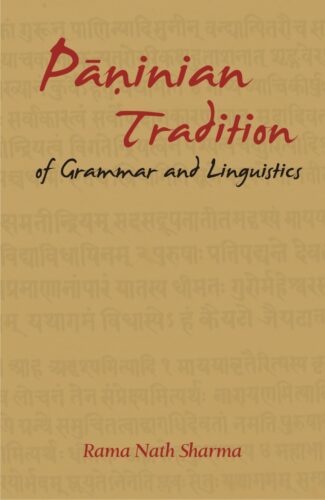
This book presents an overview of Paninian Tradition of Grammar and Linguistics, with its history presented in view of Text and Trends, where structure and content of the Ashtadhyayi are presented with focus on rule formulation, interpretation, and interaction.
The Sanskrit Tradition of Grammar and Linguistics, along with its history, is presented in view of texts and trends, where structure and content of the Ashtadhyayi find their focus on rule formulation, interpretation, and interaction. My proposal of derivation is made in view of what Panini does (acarya-pravritti) with rules of the Ashtadhyayi, and what statements (vyakhyana) were made on a given topic by Patanjali.
My presentation is all tied in with the interpretive conventions # (2) yathoddeshah samjna-paribhasham, and # (3) karyakalam samjna-paribhasham (PS) of Nagesha. It yields two kinds of ekavakyata considerations where one facilitates interpretation of a rule within adhikakars, and the other facilitates ekavakyata across domains, with no anuvritti consideration. Finally the derivational history yields a string of definitions which not only offer direction to individual derivations but also projects what rules will apply when and on what kind of string. Why does Panini repeat the use of definition terms in the Ashtadhyayi, so that they can clearly chart the path of derivation, and facilitate reconstruction of history of derivation? This all is new, and is in consonance with the tradition. The last section of this book presents a comprehensive view of modern studies on Panini to modern times.
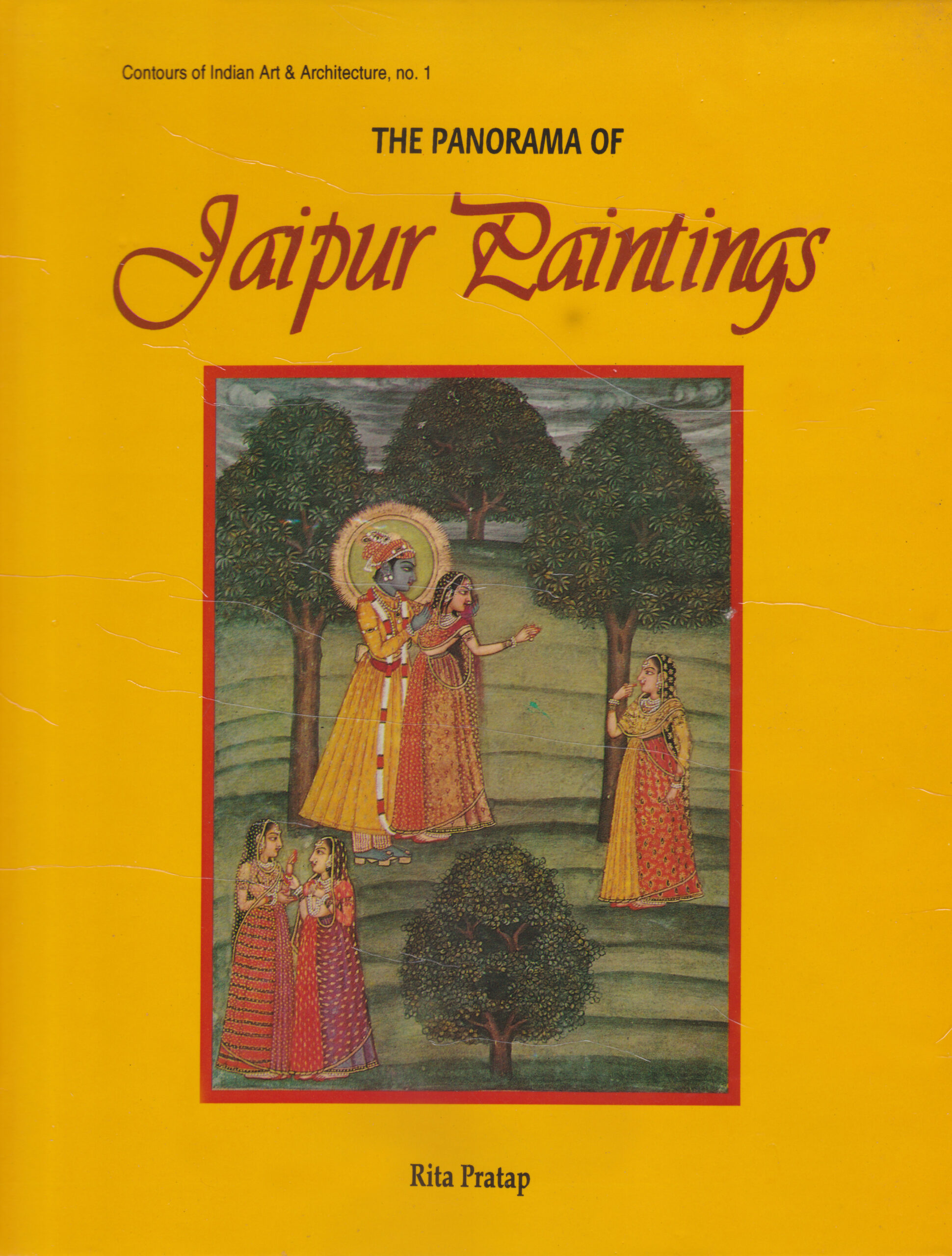
The book offers an exclusive study of the Jaipur School of Miniature Painting, in all its different articulations with focus on its historical evolution, style, form, motifs, artists and its linkages with other forms of creative expression.
Over the centuries, Indian art tradition came to have its differentiative regional, even local, specificities. For instance, the Jaipur School of Painting. Isolating itself from other Rajasthani genres like Mewar, Bikaner or Bundi, the Jaipur school set out its independent, distinctive identity, sometime during the early years of the 18th century. Historically, it was the time when the once-glorious Mughal empire was beginning to disintegrate and many of its court painters discovered, in Jaipur, a conducive haven under the generous patronage of Sawai Jai Singh (ad 1699-1743). As the capital of Rajasthan, the erstwhile Rajputana, Jaipur evokes memories of Rajput chivalry, and legendary romance. And it unmistakably represents the beautiful in art and the magnificent in architecture leave alone its fabulous cultural traditions. The School of Painting that thrived has here for over 150 years since Jai Singhs time, covers a whole diversity of themes: both sacred and secular, evolving a veritable panorama of contemporary life and culture. And yet collectively, notwithstanding their exposure to the earliest character of Mughal art, Jaipur miniatures are steeped in tradition drawing inspiration from Indian mythology, epical/classical literature, and folklore. For the first time, Dr. Rita Pratap offers an exclusive study of the Jaipur School of Miniature Painting, in all its different articulations with focus, among other aspects, on its historical evolution; its style, forms and motifs; its artists and ateliers; and its linkages with other forms of creative expression: literature, music, sculpture, dance. For her meticulous analysis she has drawn on the miniatures from private collections and museums around the world. Besides including bibliographic references and a glossary of non-English words, the book is embellished with representative specimens of Jaipur miniature paintings, exquisite figures and photographic reproductions in colour.
| There are no products |